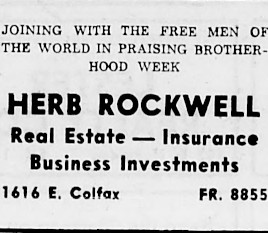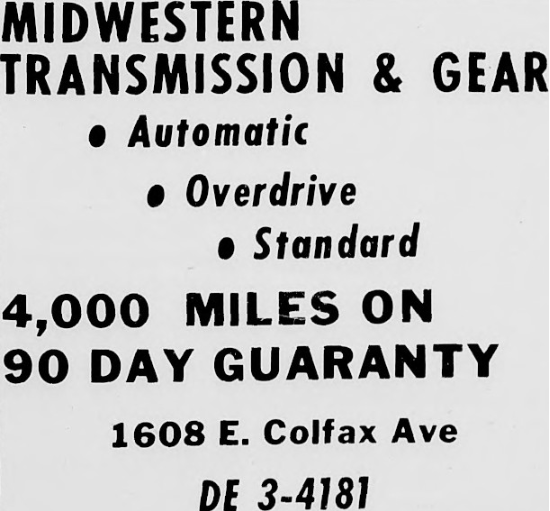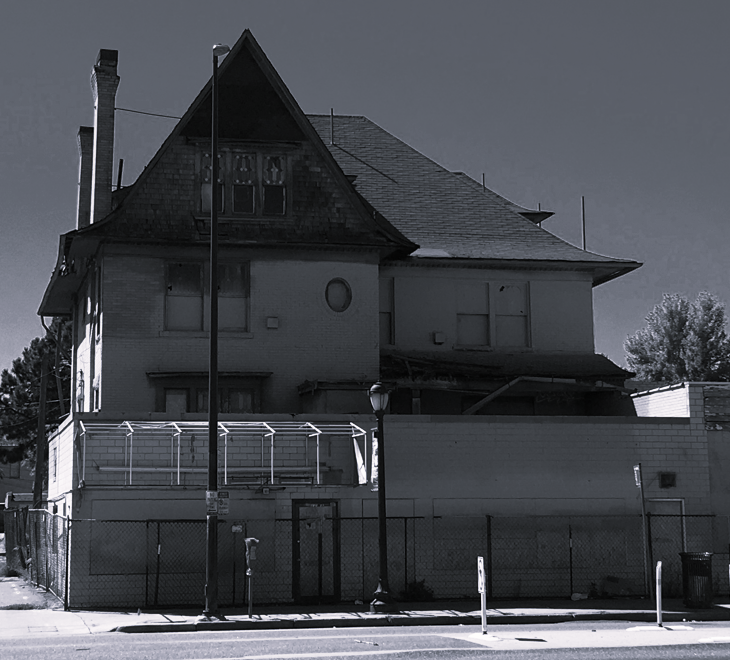
“The house at 1608 East Colfax just peeks over the storefront addition as if to beg one to remember what this street once looked like.”
– Diane Wilk, Wyman Historic District
My interest in this particular house is just a curiosity that has persisted over the years while sitting at a red light that usually positions me in front of it, pondering its degradation and curious about its glory days. Seeing a wire fence around it recently, which typically results in demolition, I suspect it’s days are numbered. So, I decided to familiarize myself with (and share) its story.
Looking Back

In the above image 1608 Colfax sits on the south side of Colfax in the center of the photo between Franklin and Gilpin Streets. A vacant lot (1473 Gilpin) belonging to John and Margaret Best is on the east side of 1608 on the southwest corner of Colfax and Gilpin. On that lot is where Peter McFarlane, machinery manufacturer of Central City, built his house in 1900. 1474 Gilpin (Austin McFarland house) sits on the far left of the image on the southeast corner of Gilpin and Colfax. 1600 Colfax sits on the far right in the image. 1600 was the residence of “mining man” A.L. Roeder. It was later the home of Kemp G. Cooper, manager of the Denver Republican newspaper, and East High School architect, George Williamson.
1473 and 1474 Gilpin are long gone. 1600 Colfax, like 1608, is currently surrounded by the same demolition fence and will likely be gone soon.
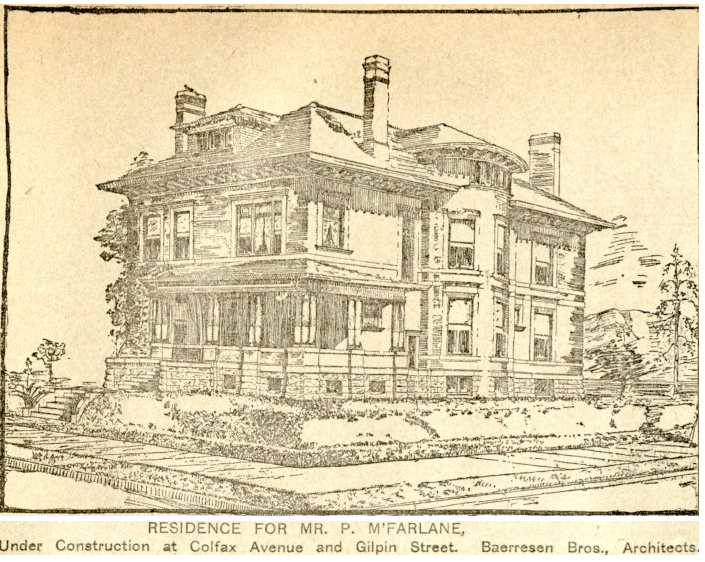


1608 Colfax
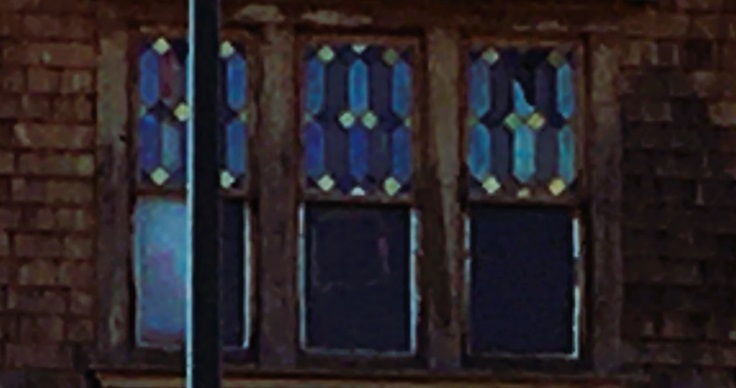
1608 Colfax is located in Wyman’s Addition, which was platted in 1882. Architect William Lang built many of the houses in Wyman’s Addition. Robert Roeschlaub and Frank Edbrooke also contributed to the neighborhood’s development. 1608 sits on Block 35 and includes the eastern half of lots 38, 39 and 40. The address appears in city directories as early as 1895, so it’s assumed the house was built between 1888 and 1895 (Wilk suggests 1893) when other large homes were being built on what was considered “Denver’s most prestigious residential street,” Colfax Avenue.
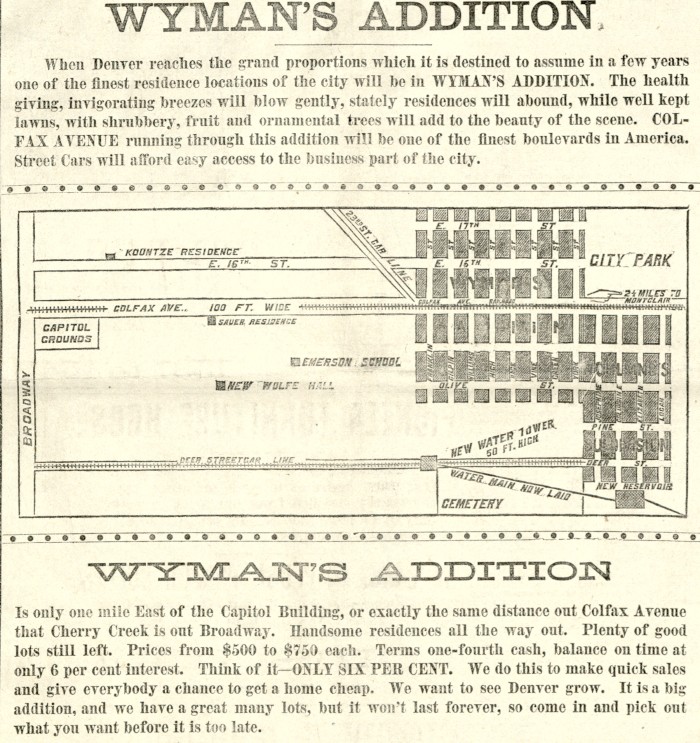
Many residents came and went in the home’s early days. According to city directories, some of the early residents were:
1895 – Edward A. Gilbert (Watson & Gilbert Fire Insurance) and Elizabeth F. Phelps.
1896 – John A. Miller
1898 – John Morton Walker (Globe Smelting and Refining Co.) and Caroline.
1899 – The Deuel Family

1903 – Samuel and Amelia Goldman
1905-07 Manie Hyman (Hyman Confectionary & Catering Co.)(Hyman Cigar & Importing Co.)

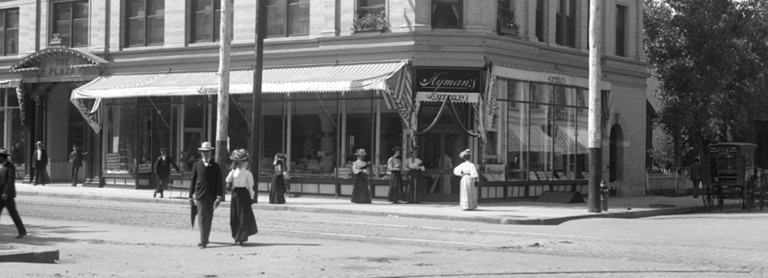
Everything Must Go!
In March of 1907 Manie Hyman had a “selling out” sale. Ads appeared in the Rocky Mountain News classifieds.




1907 – John H. Frank Smokey
1908 – Jack Vick
1911 – Clarence S. Cochran
1913 – Arthur H. and Ida F. Bryant, and daughter Ida Ardelle Bryant.
By 1924 the city directories were noting 1608 Colfax as the Yarborough Apartments, with multiple tenants living there.

The transition from large single family residences to multi-unit apartments was a growing trend by this time.

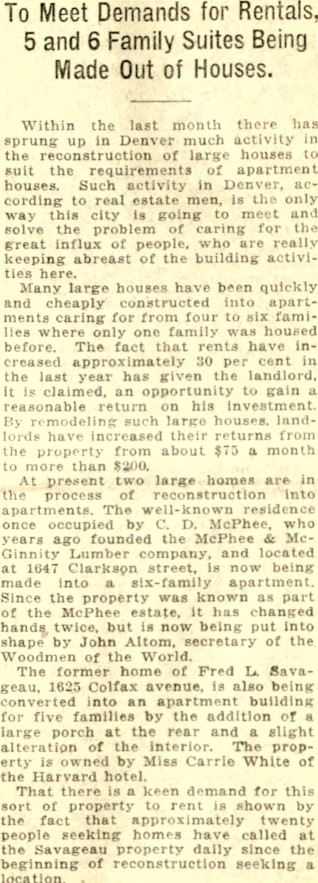
In 1928-29 Schlotthauer Shoe Repair Shop was built between 1600 and 1608 (see image below) making 1608 then 1610 and the shoe shop 1608. In 1931 the same shop and apartments remained, but the directories showed the street as “E. Colfax.”

The construction of apartment buildings and commercial buildings on E. Colfax increased. Many of the big homes were demolished to make way. Some that remained became office buildings. Some also became office buildings or apartments with storefronts built between the home and the sidewalk, such as Stanley Furs on the front of 1600 in the image below.
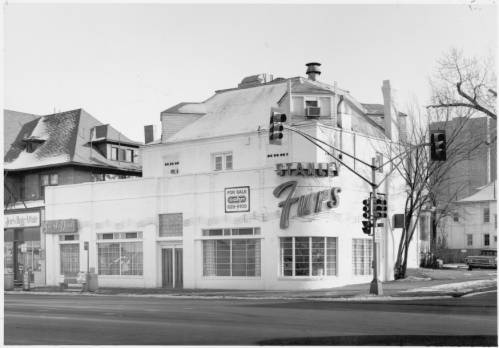
The socio-economic history of E. Colfax (and Denver) into the 20th Century and beyond has been well documented and provides plenty of detail on the realities that have resulted in the current condition of the 1600 block of E. Colfax. Wyman’s Addition was named a Historic District in 1993 which clearly did little to improve 1608, and will clearly do little to save it from the wrecking ball.
Further Reading:
The Wyman Historic District. Diane Wilk (1995, Book).
The Ghosts of Denver: Capitol Hill. Phil Goodstein (1996, Book)
Ads
